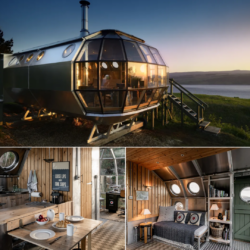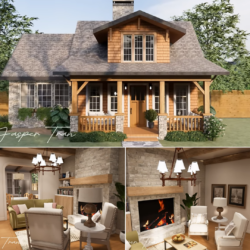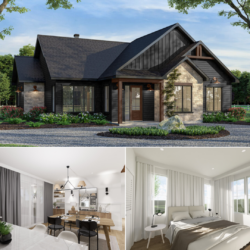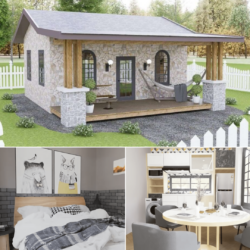
Nowadays, the complexity and speed of city life and the problems caused by consumption habits direct people to alternative lifestyles. One of these alternative lifestyles is the concept called the “tiny house” movement. Tiny houses are structures designed as small, functional, and sustainable living spaces, generally much smaller than average houses and aiming to embrace a minimalist lifestyle.


Tiny houses symbolize not only a living space but also a lifestyle. These homes not only offer a smaller space but also direct people to a simpler lifestyle by focusing on values such as sustainability, minimalism, and harmony with nature. Emerging as a solution to problems such as stress, consumption frenzy, and overuse of natural resources brought by modern life, tiny houses offer people the opportunity to contribute to a more sustainable future by not only providing reduced property costs but also leaving less impact on the environment.




A tiny house usually has an open-concept design with lots of windows and an emphasis on functionality. These houses aim to use every square meter most efficiently, focusing on the multi-purpose use of each area. Traditional home sections such as the living room, kitchen, and bedroom are often combined into a single open space, making the home feel more spacious and useful overall.

Tiny house owners often adopt a minimalist lifestyle, focusing only on the basics and needed items. This means reduced consumption habits and less waste produced. Additionally, these homes are often built with eco-friendly materials and focus on energy efficiency, resulting in less damage to the environment.

Tiny houses offer owners flexibility because they are often portable. People can easily relocate for reasons such as job changes, the desire to travel, or the need to adapt to different living conditions. This gives people a greater sense of freedom and independence.

Tiny houses often support a lifestyle in touch with nature. Many tiny house owners minimize their environmental impact by positioning their homes harmoniously within natural landscapes. Additionally, they often reduce energy consumption by being equipped with sustainable energy solutions such as solar panels, gray water recycling systems, and energy-efficient heating and cooling systems.


The popularity of tiny houses also includes economic advantages. In addition to having lower construction costs compared to traditional houses, they provide cost advantages to their owners in the long term thanks to energy and water savings. Additionally, tiny homeowners typically carry lower credit burdens and can manage living expenses more effectively.

Tiny houses also represent a social movement. Those who embrace this lifestyle seek a more meaningful life, with a greater emphasis on experiences and human relationships rather than possessions. Tiny house communities allow like-minded individuals to come together and live in solidarity. These communities aim to deviate from traditional social norms by promoting a lifestyle based on mutual aid.

However, tiny house living can bring some challenges. Limited storage space, the process of sacrificing familiar comforts, and the practical challenges of living in tight spaces can force tiny homeowners to constantly think and find solutions. Additionally, in some regions, local regulations for tiny houses may not be suitable, which may make it difficult to adopt this lifestyle.

As a result, tiny houses emerge as a way out against the challenges of modern life. These small, functional, and sustainable homes aim to offer people the opportunity to experience a more meaningful lifestyle, while also fulfilling their environmental responsibilities by placing less burden on natural resources. The tiny house movement stands out as a contemporary phenomenon that reshapes not only the understanding of housing but also the philosophy of life.







